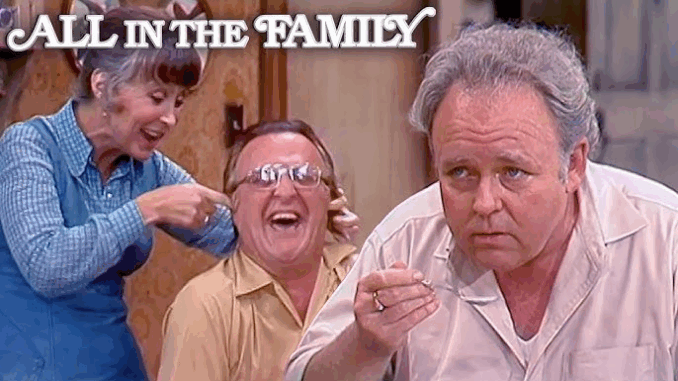
More than fifty years after its groundbreaking debut, All in the Family continues to echo through the halls of American television. While fashions have changed and storylines have evolved, the spirit of bold, issue-driven storytelling that Norman Lear championed in the 1970s remains alive and well in today’s TV landscape.
A Blueprint for Real Talk
Before All in the Family, sitcoms like The Donna Reed Show and Leave It to Beaver portrayed idealized versions of American life. Then came Archie Bunker—loud, opinionated, and unmistakably real. The show didn’t shy away from uncomfortable subjects. In fact, it leaned into them. Racism, economic struggle, political division, and generational conflict weren’t just mentioned—they were the heart of the show.
That legacy paved the way for modern series that don’t sugarcoat reality. Shows like Roseanne, The Conners, Black-ish, One Day at a Time (also rebooted by Lear), and The Carmichael Show owe a debt to All in the Family’s fearless narrative model. They explore race, class, identity, and politics with humor and honesty—just like Archie and his family did every week in Queens.
Flawed Characters, Authentic Voices
Archie Bunker was far from perfect—but he was human. That authenticity transformed character writing on television. Modern anti-heroes and morally complex leads—from Tony Soprano to Walter White to BoJack Horseman—exist because TV learned that audiences could handle nuance.
All in the Family showed that even the most stubborn, biased, or frustrating characters could be relatable. Today, creators build characters with contradictions—people who grow, regress, and struggle, just like real viewers. This approach fosters empathy, encourages dialogue, and keeps audiences coming back.
Single Set, Big Impact
The show was famously filmed on a modest set: a living room, a kitchen, a few offscreen bedrooms. Yet from that small stage, All in the Family sparked national conversations. Its power proved that emotional resonance and powerful writing mattered more than visual spectacle.
This minimalist, character-focused formula is still used today in shows like Fleabag, Ramy, Atlanta, and even animated series like Rick and Morty, where intimate moments often outshine visual effects. It’s a reminder that sometimes, one room and two voices are enough to start a revolution.
The Live Legacy
The 2019 ABC special Live in Front of a Studio Audience, produced by Norman Lear and Jimmy Kimmel, brought All in the Family back to life with Woody Harrelson and Marisa Tomei in the lead roles. It was more than nostalgia—it was proof that the show’s messages were still vital. Its success demonstrated that audiences still crave meaningful stories that challenge as much as they entertain.
